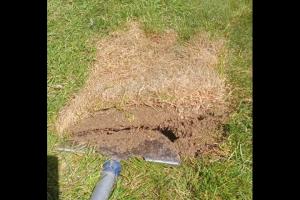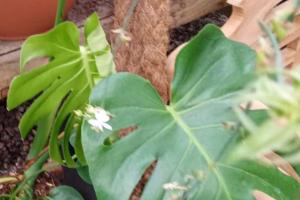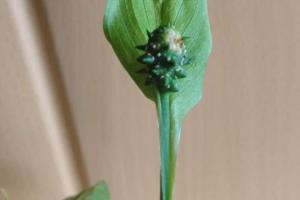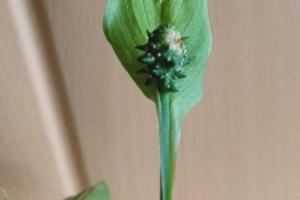How to Revive Dying Daisies
The most common reasons for daisies dying are because of not enough sunlight or dry soil. Daisies need around 6 hours of direct light and consistently moist soil to flower and remain upright. If the daisy does not have enough light or moisture it wilt turn brown and die back.
However daises are fairly resilient to temporary drought stress and can often be revived by watering and applying a mulch to conserve moisture in the soil.
Here is a table summarizing other common reasons for daisies dying…
| Symptoms of Dying Daisies: | Reasons for Dying Daisies: |
| Daisies drooping, wilting and falling over: | Not enough sunlight, dry soil, overwatering, high temperatures and sun and low nutrients. |
| Potted daisies dying: | Pots heat up quickly and dry out before the daisies roots can draw up the moisture they need. Pots also have a limited capacity for soil and therefore nutrients which can turn the leaves yellow with a dying appearance. |
| Daisy leaves turning brown: | A sudden heat wave and dry soil. Overwatering or slow drainage are often contributing factors. Leaves and flower turn brown and die back at the end of the season naturally. |
| Daisy flower turning brown: | Flowers turn brown naturally one by one and need dead heading through the season. Flowers can turn brown with curling petals due excess wind and under or over watering. |
| Daisy leaves turning yellow: | Most common cause is a lack of nutrients, (nitrogen in particular). Overwatering and underwatering are contributing causes. |
Keep reading to learn why your daisies are dying and how to implement the solutions to save them…
Why are my Daisies Wilting, Drooping and Falling Over? (Not Enough Sunlight)
- Symptoms: Daisies with a drooping appearance.
- Causes: Not enough sun, excess heat and afternoon sun, not enough moisture in the soil, overwatering and low nutrient soil.
In my experience the most common reason for daisies drooping is because they do not have enough direct sunlight.
Daises need at least 6 hours of direct sunlight to photosynthesize, flower and prevent a drooping appearance.
Without enough light they are likely to droop over as they do not have enough energy.
However, another common problem is that daisies can droop due to a combination of too much intense sun and heat which causes the flowers to droop and the leaves to wilt as a way of retaining moisture in response to high Summer temperatures.
This is often a temporary reaction if the heat of day is overwhelming and the daisies can perk up later in the evening with cooler temperatures and a generous soak of water.
However if you are in a very hot climate or experiencing a prolonged heat wave then the daisies may not recover so readily.
If the soil dries out too much the daisies are also likely to droop due to a lack of moisture. Keep in mind that it may not necessarily be a lack of rainfall that is causing the deficit in soil moisture but it may also be as a result of:
- The soil dries too quickly (if your soil is sandy or stoney then it may not retain enough moisture to prevent the daisies from wilting).
- If the daises are in a pot then pots can heat up quickly in the blazing sunshine and dry out before the daisies roots can uptake the moisture.
- If the soil bakes hard in the sun and heat which can cause water to trickle off the surface of the soil without infiltrating properly and reaching the roots.
It is also worth considering whether a lack of nutrients in the soil is causing your daisies to droop and fall over.
Daisies prefer fertile soil to grow their best and display the most flowers. Sandy or stoney soil does not retain much nutrients or moisture so I find that it is often the cause of daises drooping.
This can be a problem for daisies grown in pots and containers as the daisy’s roots can exhaust the pots of nutrients after a few years.
Whilst underwatering and poor soil is a far more common cause of wilting daisies, overwatering and poor drainage can also be responsible.
Daisies need the soil to retain moisture yet to also to be well draining so that the roots are not submerged in saturated soil.
If the soil is too damp then the excess water can exclude oxygen from the soil which prevents the daisy’s roots from respiring, causing the daisy to droop. Eventually the roots can rot which is often the cause from dying daisies.
Root rot can also be a problem if the daisies are planted in pots without drainage holes in the base.
How to Revive Daisies That are Wilting, Drooping or Falling Over
- Assess how many hours of sunlight your daisies have and if it less the 6 hours of direct sunlight, either cut back any shrubbery or overhanding tree branches that may be casting shade or transplant your daisies to a sunnier location in your garden.
- If find it is best to grow daisies in 6 hours of morning sun followed by afternoon shade. The daisies get to experience the morning sun without contending with the higher temperatures of the afternoon heat and sun, which prevents them from drooping.
- The daisies soil needs to be evenly moist without being constantly saturated. Usually a lack of moisture is the problem causing drooping daisies rather then too much. Soak the soil generously (I would recommend using a hose pipe) to ensure that the water is infiltrating properly to reach the roots where it is required.
- Apply a layer of mulch (compost, leaf mulch or well rotted manure) around the base of the daisies. A layer of mulch help to conserve moisture and prevents the surface of the soil from baking hard and becoming hydrophobic (water repelling). Mulch also improve the soils structure (particularly you soil is stoney or sandy) so that it is porous and well draining yet holds moisture which is ideal for preventing daisies from wilting. Mulch also adds additional nutrients to the soil.
- If your daises are drooping for no obvious reason then consider whether it may be that the soil is low in nutrients or the daises have exhausted the nutrients in the soil. In which case I recommend applying a granular all purpose fertilizer from miracle-gro (or a similar product) in the Spring and Summer. I recommend using granular fertilizer as it releases nutrients slowly to avoid problems with over fertilizing which can also cause drooping plants. An all purpose fertilizer provides the daises with all the nutrients at the right concentration it requires to prevent a drooping, dying daisy and to promote flowering.
- If your potted daises are drooping then it may be necessary to repot your daisies to a larger pot. With larger pots, there is more capacity for soil and therefore more capacity for retaining moisture to prevent them from drooping due to drought stress.
- If the daises are drooping despite consistent watering then it is likely the problem is overwatering or slow draining soils. Daises need the soil to be moist yet well draining to avoid drooping. Scale back your watering if the soil feel damp and it may be necessary to transplant your daises if the soil is naturally low lying and boggy. If the daisies are in pots ensure that they have drainage holes in the base. You can elevate the pot on ‘feet’ or bricks an inch or so off the ground to ensure good drainage.
Daisies Leaves and Flowers Turning Brown
- Symptoms: Daisies wilting with the leaves turning brown and sometimes curling. The flower petals curl, turn brown and die back.
- Causes: A sudden fluctuation in temperature and light intensity. Drought stress and overwatering are often contributing factors. Daisy leaves and flowers die back every year and need to be cut back.
In my experience, daisy leaves turn brown when there is a sudden increase in temperature and the intensity of sunlight often from a heat wave.
The sudden increase in heat and light does not allow time for the daisy to acclimate to warmer weather which can scorch the leaves and even flowers brown.
Daisies usually droop in response to drought if the soil is temporarily dry and the leaves and flowers can turn brown if they have been chronically short of water.
If daisies are suffering from overwatering and potentially root rot then the leaves droop and turn brown.
A drooping appearance is usually the early warning sign that the daisies are stressed before they the leaves and flowers turn brown.
However it should be noted that whilst daisies are perennials (they come back every year) the foliage and flowers do eventually turn brown and die back every year before Winter. What time daisies turn brown depends on many factors such as the climate and the species of your daisy.
If this happens then there is nothing wrong with the plant and it should come back the following year.
Daisy Flowers Turning BrownIt is worth baring in mind that daisy flowers often turn brown after a few weeks when they are spent and should be deadheaded. The flowers turning brown is a natural part of the cycle and is nothing to be concerned about.
Deadheading redirects the daisies energy from develop seeds to producing more flowers and can prolong the flowering season.
However the flower petals can curl and leaves can turn brown due to high temperatures, drought stress and overwatering.
How to Revive Daises with Leaves and Flowers Turning Brown
It is first important to establish why the daisies are turn brown. I
f there is a sudden heat wave and the leaves have all turned brown then I recommend cutting the daisies back to 2 inches above the ground to stimulate regrowth as the brown leaves do not turn green again.
If it is early in the season the there is every chance the daisies can regrow and flower, as some species are capable of flower multiple time throughout the year.
If this keeps happening year on year and you live in a climate with high temperatures then I recommend relocating your daises (in the Fall or Spring) to an area of the garden with around 6 hours of morning sun and afternoon shade to protect it from harsh sun and excessive heat which should hopefully prevent them from turning brown
If you suspect drought stress is the cause of the leaves turning brown then give the soil a good soak and apply a layer of compost around the base of the daisies to lock in the moisture.
If the pots are heating too quickly in Summer and killing the daises then repot daisies into a bigger pot as it should dry out much slower and water regularly.
If the soil is boggy then scale back the watering and assess whether the soil is draining too slowly (which can happen if they are planted in clay soil). Relocate your daisies to either pots, raised beds or an area of the garden with better drainage as a matter of urgency to prevent root rot.
Deadhead any brown spent flower regularly throughout the season.
Once the leaves and flowers begin to turn brown at the end of the season then cut the foliage back to 2 inches above the ground with sharp pair of pruners. The daisies should remerge the following year.
Daisy Leaves Turning Yellow (Lack of Nitrogen)
If the leaves are turning yellow, the most probable cause is a lack of nitrogen in the soil. Daisies are relatively heavy feeders and can exhaust the soil of nitrogen in the vegetative stage of growth.
If find this is particularly true of Shasta daisies (which are a tall variety) and daises growing in pots. The roots can exhaust the soil of nutrients, which can turn the leaves both brown and yellow with a dying appearance or stunted growth and fewer flowers.
The solution is to amend the soil with fertilizer. Again my recommendation is miracle-gro granular fertilizer as this provides all the nutrients the daisies need without risking problems associated with too much fertilizer which can burn the roots and prevent flowering.
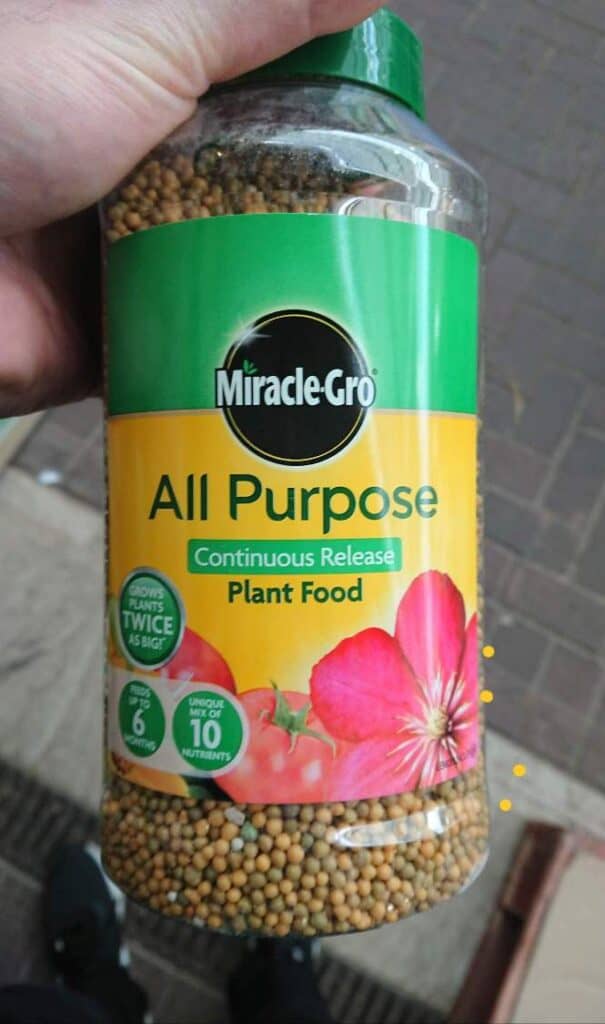
The yellowing growth may not recover but the added fertilizer should stimulate new green growth which should display flowers.
If the leaves are turning yellow and the plant is wilting then this is due to overwatering or drought stress. In which case scale back the watering and ensure the daisies have good drainage if the soil feels boggy whereas you should soak the ground with a hose and apply a mulch if the ground feels dry.
Key Takeaways:
- A dying daisy is usually because of a lack of sunlight. Daisies need 6 hours of direct sunlight to avoid a drooping appearance. Drought stressed daisies wilt with their leaves and flowers turning brown and dying back.
- To revive dying daisies create their optimal environmental conditions of 6 hours of morning sun, consistently moist soil, use an all purpose fertilizer and apply a layer of mulch around the base of the daisies to conserve soil moisture.




